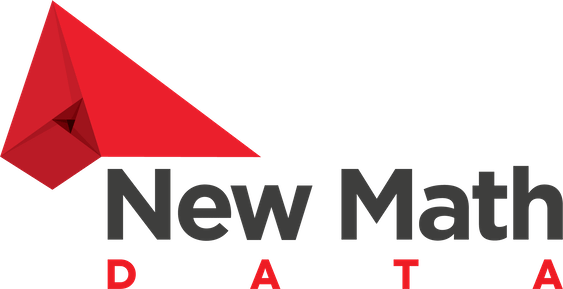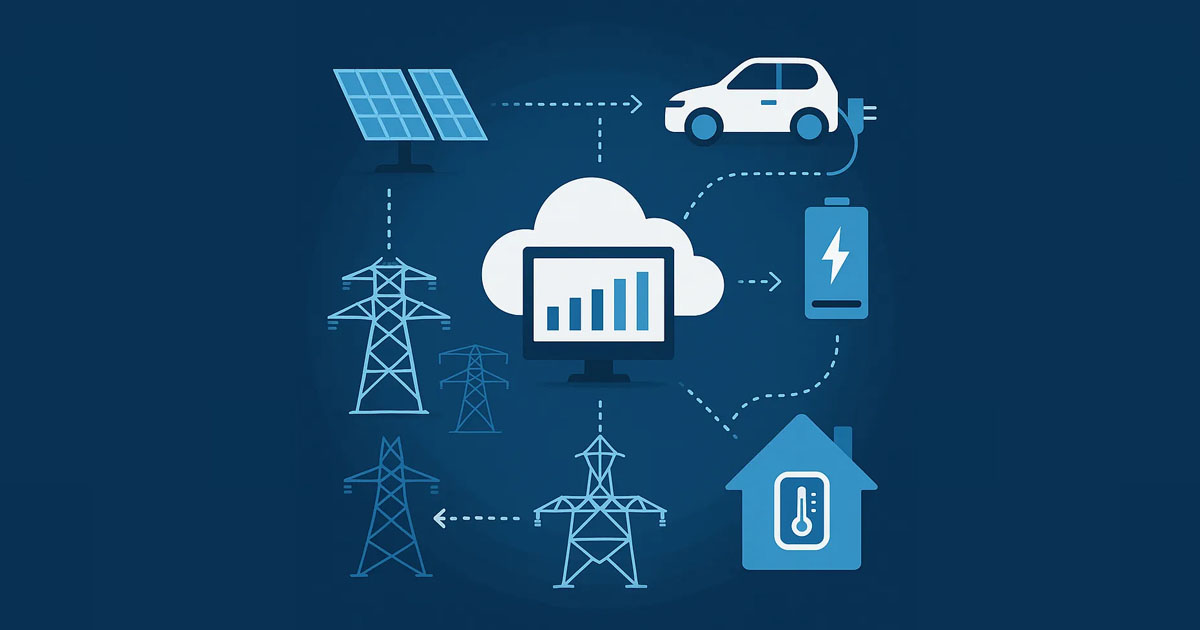Unlocking cost savings, real-time control, and resilience with intelligent distributed energy management
Introduction
As the energy landscape evolves, Distributed Energy Resource Management Systems (DERMS) play a crucial role in integrating renewable energy resources and optimizing grid performance. DERMS enable utilities to efficiently manage distributed energy resources (DERs) such as inverter-based resources (IBRs), electric vehicles (EVs), and smart thermostats. This white paper explores the implementation of DERMS, data flow processes, cost reduction strategies, communication protocols, customer incentive structures, and how DERMS help defer costly infrastructure upgrades.
What is DERMS?
DERMS are software-based systems that enable utilities to monitor, control, and optimize DERs in real-time. They provide a centralized platform to manage distributed resources, ensuring grid stability, reliability, and efficiency. DERMS facilitate demand response, voltage regulation, and frequency management by dynamically adjusting the output and consumption of connected DERs.
One of the most significant benefits of DERMS is its ability to defer infrastructure and capacity investments. Traditionally, when grid assets such as transformers or substations approach overload conditions, utilities must invest in expensive upgrades or replacements — costing millions or even billions of dollars. If they do not change those assets in the field then ther devices will beoverheating and there will be a permanent damage to the equipment and in addition to that customer will face outages. DERMS help mitigate these issues by optimizing existing resources. Instead of immediately upgrading infrastructure, DERMS can redistribute load dynamically by triggering DER assets, such as adjusting IBR output, optimizing EV charging, or deploying demand response strategies. By intelligently managing the grid, utilities can extend the lifespan of existing assets, reducing the need for premature infrastructure expansion.
Role of AMI 2.0 and AMI Meter Load Disaggregation in DERMS Implementation
Advanced Metering Infrastructure (AMI) 2.0 and load disaggregation technologies are critical enablers of DERMS implementation. These technologies provide granular, real-time data that enhances the ability to forecast demand, manage DERs, and optimize grid operations.
- AMI 2.0: This next-generation smart metering system offers higher-resolution data, improved two-way communication, and enhanced analytics. AMI 2.0 enables real-time monitoring of customer energy usage and DER performance, allowing utilities to make faster, data-driven decisions in DERMS operations.
- Load Disaggregation: This technique breaks down total energy consumption at a customer level into individual appliance and DER usage patterns. By identifying specific loads such as HVAC systems, EV chargers, and solar generation, utilities can optimize demand response strategies and enhance load forecasting accuracy. For eg. Customers load and generation from residential solar and batteries are different components. But AMI data is usually aggregated and therefore utilities face issues when they try to calculate customers base load at a given time because usually the consumption data is the difference between the generation and consumption.Thats where AMI 2.0 can help.
- Customer-Level Load Forecasting: With AMI 2.0 and load disaggregation, utilities can develop more precise load forecasts at the individual customer level. This helps to predict peak loads, plan grid reinforcements, and dynamically adjust DER dispatch in real time.
By leveraging AMI 2.0 and load disaggregation, DERMS can optimize grid management to ensure efficient resource allocation, minimize grid stress, and support a seamless transition to a decentralized energy system. A decentralized energy system will help to reduce loading in the grid assets as some of the power demand can be met locally.
Generation Assets in DERMS Management
Various generation assets and distributed energy systems participate in DERMS, including:
- Inverter-Based Resources (IBRs): These include solar photovoltaic (PV) systems and battery energy storage systems (BESS). IBRs help balance grid demand and supply by injecting or absorbing power based on real-time grid conditions. For e.g. at higher voltage levels batteries can be charged and at lower voltage levels batteries can be discharged.
- Electric Vehicle (EV) Managed Charging: EVs can act as flexible loads or energy storage resources. By optimizing charging schedules, DERMS can reduce peak demand and support grid reliability.
- Smart Thermostats: These devices adjust heating and cooling loads based on grid conditions, helping reduce demand during peak hours. Utilities can learn from customers’ usage and then utilities can decide when they can adjust customers’ devices according to their usage patterns.
By integrating these assets into DERMS, utilities can better manage distributed energy flows and enhance grid resilience.
Data Flow in DERMS
DERMS relies on a structured data flow to process information and execute grid management actions. The data flow process includes the following stages:
- Raw Data Collection: Sensors, smart meters, and communication interfaces collect data from DERs, grid assets, and external sources such as weather forecasts.
- Data Curation: Collected data is cleaned, aggregated, and formatted to ensure consistency and accuracy for further processing.
- Power System Modeling: The curated data is fed into power system models to analyze real-time grid conditions and predict potential issues.
- Running Power Flow Analysis: Advanced algorithms simulate power flows to identify constraints, voltage fluctuations, and overloading conditions.
- Violation Detection: DERMS identifies system violations, including overvoltage, thermal overloads, and phase imbalances.
- Violation Mitigation & Load Relief: Based on predefined rules, DERMS triggers appropriate DERs (e.g., adjusting IBR output, optimizing EV charging) to resolve violations and maintain grid stability.
Data from DERs back to utility: Data from connected DERs is sent back to the utility through AMI systems, communication networks, and aggregator interfaces. This real-time data, including energy consumption, voltage levels, and generation status (such as solar output or battery charge/discharge rates), is crucial for accurate grid modeling and optimization. The utility can then use this information to adjust grid parameters, prevent overloading, and ensure reliable power delivery.
This structured data flow enables DERMS to make informed, real-time decisions for efficient grid operation.
Cost Reduction Strategies for DERMS Implementation
The cost of DERMS implementation varies depending on regulatory environments and market structures. Utilities can reduce costs through:
- Standardization & Open Protocols: Using industry standards such as OpenADR and IEEE 2030.5 lowers integration costs by ensuring interoperability with multiple vendors and aggregators.
- Cloud-Based Solutions: Cloud-based DERMS platforms reduce infrastructure costs and improve scalability.
- Leveraging Existing Smart Grid Infrastructure: Reusing existing communication networks and smart meters minimizes additional hardware investments.
- Regulatory Incentives & Cost Recovery Mechanisms: Utilities can leverage regulatory frameworks to recover DERMS implementation costs through rate cases and performance-based incentives.
Role of OpenADR and IEEE 2030.5 in DERMS Integration
Communication protocols such as OpenADR and IEEE 2030.5 facilitate seamless integration of DERMS with aggregators and Original Equipment Manufacturers (OEMs):
- OpenADR (Open Automated Demand Response): A standardized protocol that enables utilities to send automated demand response signals to DERs, helping manage grid stress and balance supply-demand fluctuations.
- IEEE 2030.5 (Smart Energy Profile 2.0): A communication standard designed for secure, real-time data exchange between utilities, aggregators, and customer-owned DERs.
These protocols ensure secure, scalable, and cost-effective integration of DERs into grid management systems.
Customer Incentives, Aggregator Payments, and OEM Compensation
For DERMS to be successful, customer participation and financial incentives are essential. The economic model typically includes:
- Customer Incentives: Utilities offer rebates, bill credits, or dynamic pricing benefits to customers who enroll their DERs in demand response programs.
- Aggregator Payments: Aggregators, which manage groups of DERs, receive compensation based on performance metrics such as load reduction and grid support services.
- OEM Compensation: DER manufacturers and technology providers receive payments for ensuring device compatibility, software updates, and ongoing support.
A well-structured incentive model encourages DER participation, ultimately benefiting both utilities and consumers.
Conclusion
DERMS play a crucial role in modern grid management by optimizing DER integration, enhancing reliability, and supporting demand response initiatives. By leveraging standardized protocols, structured data flow, and cost-effective strategies, utilities can implement DERMS efficiently while maximizing grid benefits. Furthermore, by utilizing DERMS to defer expensive infrastructure investments, utilities can achieve significant cost savings while maintaining reliable and resilient grid operations. As the energy transition accelerates, DERMS will be a key enabler of a smarter, more resilient power system.
At New Math Data, we work on DERMS implementations for customers of various sizes and complexities. Comment below or reach out to us to share your experiences!

